Sort by:
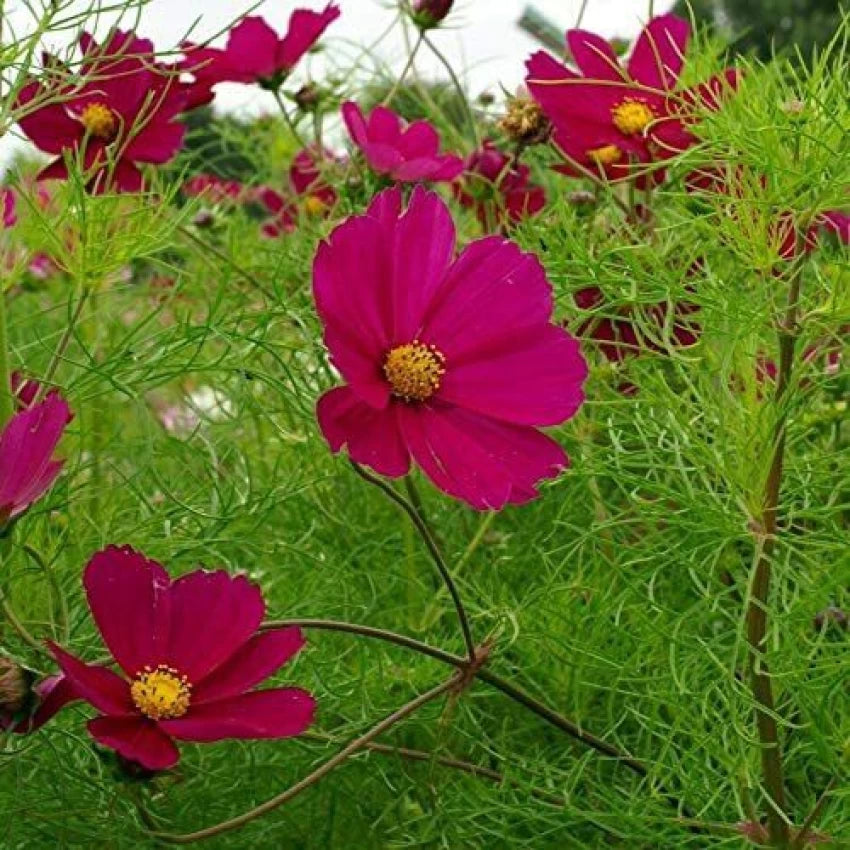
Cosmos 'Dazzler' Seeds for Garden and Container Planting
Cosmos 'Dazzler' Seeds for Garden and Container Planting
Cosmos 'Dazzler' Seeds for Garden and Container Planting
Welcome to Dhara Seeds, a big, trusted name in the USA seed market with a vast, high-quality selection of non-GMO seeds and heirloom seeds. Our Cosmos 'Dazzler' Seeds for Garden and Container Planting invite gardeners of all levels to experience the joy of cultivating striking crimson blooms that effortlessly elevate any outdoor space. With their vivid color and adaptable nature, these seeds promise a rewarding endeavor for both beginners and seasoned horticulturists.
Characteristics and Uses of Cosmos 'Dazzler' Plants
Cosmos 'Dazzler' Seeds from Dhara Seeds give rise to graceful plants that grow 3-4 feet tall, crowned with cosmos seeds that unfurl into vibrant, deep red-pink flowers with a subtle golden center. These flower seeds are paired with wispy, fern-like foliage, lending an airy elegance to their robust blooms. Perfect for cutting, their sturdy stems shine in fresh floral arrangements, while their nectar-rich flowers draw pollinators like butterflies and bees, enhancing ecological harmony. Whether displayed in a vase or swaying in the breeze, Cosmos 'Dazzler' offers a dazzling blend of beauty and purpose.
Growing Conditions for Cosmos 'Dazzler' Plants
- Light Requirements: Full sun, requiring 6-8 hours of direct sunlight daily for prolific flowering.
- Soil Preferences: Well-draining soil, adaptable to average or nutrient-poor types with a pH of 6.0-7.0.
- Temperature Range: Thrives in warm conditions, ideally 70°F to 85°F, with no frost tolerance.
- Spacing Needs: Space plants 12-18 inches apart to support their upright growth and air circulation.
Planting Tips for Cosmos 'Dazzler'
- Direct Sowing: Plant seeds for planting outdoors after the last frost, in soil warmed to at least 60°F.
- Depth: Sow seeds ¼ inch deep, lightly covering with soil and pressing gently for contact.
- Containers: Opt for pots at least 12 inches deep with drainage holes for thriving container plants.
- Companions: Pair with vegetable seeds like peppers to attract pollinators and enrich garden vitality.
Watering Instructions and Tips
- Frequency: Water lightly, about 1 inch per week, as they handle drought well once established.
- Method: Water at the base to keep foliage dry, minimizing the risk of disease.
- Timing: Morning watering allows plants to dry during the day, promoting vigor.
- Tip: In containers, ensure proper drainage to prevent waterlogged roots.
Growing Zones
- USDA Zones: Grows as an annual in zones 2-11, excelling in warm, sunny climates.
- Global Adaptability: Flourishes in temperate to subtropical regions with extended summers.
- Season Extension: Start indoors 4-6 weeks before the last frost for earlier blooms in cooler areas.
Key Benefits & Uses
- Eye-Catching Color: Bold crimson blooms create a striking focal point in any setting.
- Pollinator Magnet: Supports bees and butterflies, fostering a sustainable garden ecosystem.
- Flexible Growth: Adapts beautifully to both garden beds and containers for versatile planting.
- Easy Maintenance: Requires little fuss, ideal for gardeners seeking low-effort beauty.
Best Uses in the Garden & Landscape
- Focal Points: Use their height and color to anchor mixed beds or container groupings.
- Cottage Charm: Blend with herb seeds for a relaxed, vibrant look in the landscape.
- Patio Accents: Elevate small spaces with potted 'Dazzler' plants on decks or balconies.
- Wildlife Gardens: Combine with other gardening seeds to craft pollinator-friendly havens.
Conclusion
Cosmos 'Dazzler' Seeds for Garden and Container Planting from Dhara Seeds bring a burst of brilliance and simplicity to your gardening pursuits. Whether you’re growing organic seeds for the first time or refining your floral palette, this variety offers unparalleled allure. As a big, trusted name in the seed world, Dhara Seeds provides a wide range of high-quality, non-GMO varieties to gardeners everywhere, ensuring your efforts bloom into moments of pure delight.
FAQ
How do I grow Cosmos 'Dazzler' Seeds?
Sow seeds outdoors after the last frost in full sun, ¼ inch deep in well-draining soil. Keep soil lightly moist until germination (7-21 days), then space plants 12-18 inches apart. For containers, use pots with drainage and water sparingly once established.
When should I plant Cosmos 'Dazzler' Seeds?
Plant directly outdoors after the last frost in spring, when soil warms to 60°F or higher, typically late spring to early summer. Start indoors 4-6 weeks prior for earlier flowering in shorter seasons.
Are Cosmos 'Dazzler' Seeds difficult to grow?
No, they’re beginner-friendly. With ample sunlight, minimal watering, and basic care, these best flower seeds thrive effortlessly, making them a perfect pick for gardeners of all experience levels.
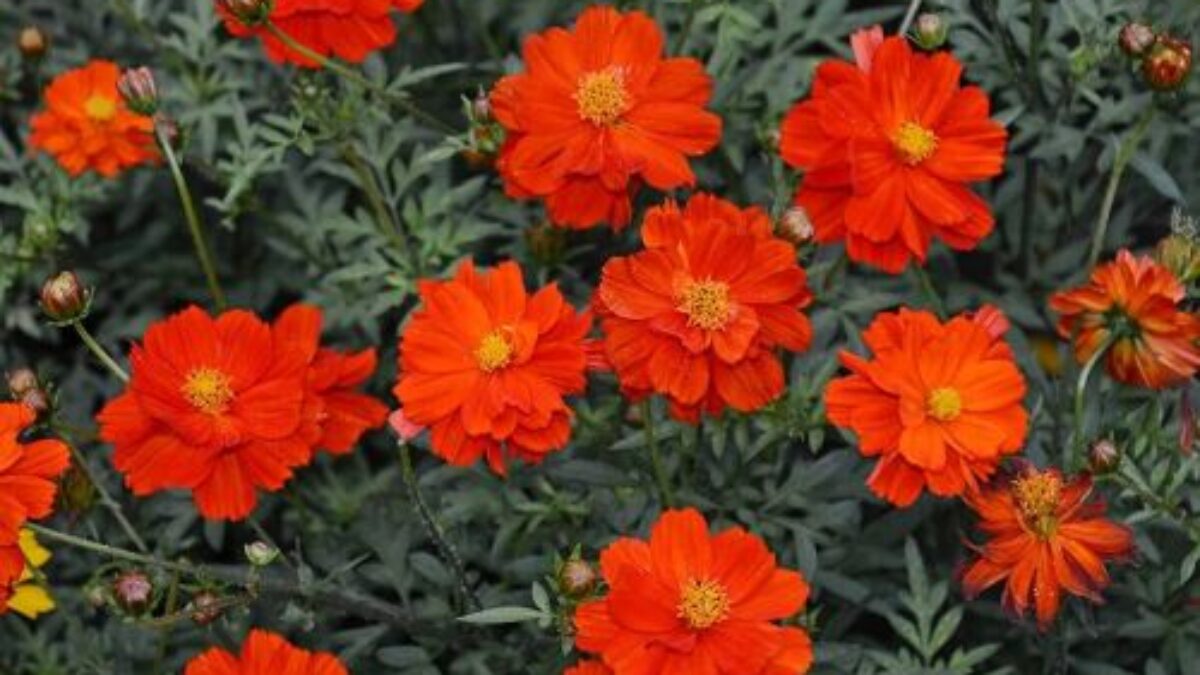
Cosmos Red Mixed Seeds for Garden and Container Planting
Cosmos Red Mixed Seeds for Garden and Container Planting
Cosmos Red Mixed Seeds for Garden and Container Planting
Welcome to Dhara Seeds, a big, trusted name in the USA seed market with a vast, high-quality selection of non-GMO seeds and heirloom seeds. Our Cosmos Red Mixed Seeds for Garden and Container Planting invite gardeners of all levels to cultivate a striking display of red-hued blooms. This vibrant mix promises effortless beauty and versatility, perfect for enhancing both sprawling gardens and cozy containers with a touch of elegance.
Characteristics and Uses of Cosmos Red Mixed Plants
Cosmos Red Mixed Seeds from Dhara Seeds grow into graceful plants that stand 3-4 feet tall, bearing cosmos seeds that unfurl into a dazzling array of red-toned flowers—ranging from deep crimson to soft scarlet. These flower seeds produce blooms with a delicate, open form, framed by feathery foliage that adds a light, airy texture. Ideal for cutting, their sturdy stems make them a favorite for fresh arrangements, while their nectar-rich flowers draw butterflies and bees, enriching any outdoor space. Whether used as a decorative accent or a pollinator magnet, Cosmos Red Mixed plants offer both visual splendor and practical value.
Growing Conditions for Cosmos Red Mixed Plants
- Light Requirements: Full sun, with 6-8 hours of direct sunlight daily for prolific flowering.
- Soil Preferences: Well-draining soil, adaptable to average or nutrient-poor conditions, with a pH of 6.0-7.0.
- Temperature Range: Thrives in warm climates, ideally 70°F to 85°F, sensitive to frost.
- Spacing Needs: Space plants 12-18 inches apart to support their natural spread and health.
Planting Tips for Cosmos Red Mixed
- Direct Sowing: Plant seeds for planting outdoors after the last frost, in soil warmed to 60°F or higher.
- Depth: Sow seeds ¼ inch deep, lightly covering with soil and pressing gently.
- Containers: Opt for pots at least 12 inches deep with drainage for successful container planting.
- Companions: Pair with vegetable seeds like peppers to enhance pollination and garden harmony.
Watering Instructions and Tips
- Frequency: Water lightly, about 1 inch per week, as they tolerate dry spells once established.
- Method: Water at the base to keep foliage dry, reducing disease risk.
- Timing: Morning watering ensures plants dry out during the day, promoting vigor.
- Tip: In containers, check drainage to prevent waterlogging—let soil dry slightly between waterings.
Cosmos 'Gloria Rosa' Seeds for Garden and Container Planting
Cosmos 'Gloria Rosa' Seeds for Garden and Container Planting
Cosmos Gloria Rosa Seeds for Garden and Container Planting
Welcome to Dhara Seeds, a big, trusted name in the USA seed market with a vast, high-quality selection of non-GMO seeds and heirloom seeds. Our Cosmos Gloria Rosa Seeds for Garden and Container Planting offer gardeners of all levels a chance to cultivate breathtaking beauty with ease. This exquisite variety, with its rosy-pink blooms, transforms any space—be it a sprawling garden or a modest container—into a floral haven, making it a delightful choice for both novices and seasoned growers.
Characteristics and Uses of Cosmos Gloria Rosa Plants
Cosmos Gloria Rosa Seeds from Dhara Seeds produce elegant plants that reach heights of 3-4 feet, adorned with cosmos seeds that bloom into delicate, saucer-shaped flowers in a captivating rosy-pink hue. These flower seeds feature feathery, fern-like foliage that complements their airy blossoms, creating a soft, romantic aesthetic. Perfect for cutting gardens, their long stems make them ideal for fresh bouquets, while their nectar-rich flowers attract pollinators like butterflies and bees, adding life to any setting. Whether enjoyed in vases or as a living display, Cosmos Gloria Rosa brings charm and utility to every gardener’s repertoire.
Growing Conditions for Cosmos Gloria Rosa Plants
- Light Requirements: Full sun, with 6-8 hours of direct sunlight daily for abundant blooms.
- Soil Preferences: Well-draining soil, thriving in average to poor conditions with a pH of 6.0-7.0.
- Temperature Range: Prefers warm weather, ideally 70°F to 85°F, with no frost tolerance.
- Spacing Needs: Space plants 12-18 inches apart to allow for their natural spread and airflow.
Planting Tips for Cosmos Gloria Rosa
- Direct Sowing: Plant seeds for planting outdoors after the last frost, in soil warmed to at least 60°F.
- Depth
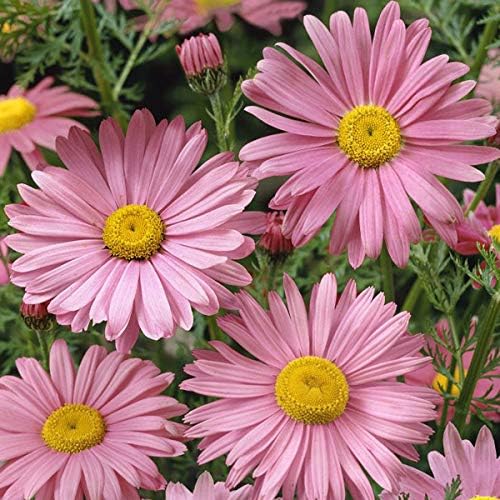
Pink Chrysanthemum Perennial Flower Seeds for Home & Garden
Pink Chrysanthemum Perennial Flower Seeds for Home & Garden
Bonsai Pink Chrysanthemum Seeds (Perennial, Long Blooming)
Characteristics and Uses of Bonsai Pink Chrysanthemum Plants
Bonsai Pink Chrysanthemum is a stunning perennial flower known for its vibrant pink blooms and long blooming season. These charming plants are perfect for adding a splash of color to any garden or container. With their compact growth habit, they are ideal for small spaces and can be used in various settings, from traditional gardens to modern patios. As a popular choice among gardeners, these flowers not only enhance the aesthetic appeal but also attract pollinators, making them a valuable addition to any garden.
Growing Conditions for Bonsai Pink Chrysanthemum Plants
- Light Requirements: Prefers full sun to partial shade.
- Soil Type: Thrives in well-drained, fertile soil.
- Temperature: Best suited for moderate climates, tolerating a range of temperatures.
Planting Tips for Bonsai Pink Chrysanthemum
- Start seeds indoors 6-8 weeks before the last frost date for early blooms.
- Transplant seedlings outdoors after the danger of frost has passed.
- Space plants about 12-18 inches apart to allow for proper air circulation.
Watering Instructions and Tips
- Water regularly, especially during dry spells, to keep the soil consistently moist.
- Allow the top inch of soil to dry out between waterings to prevent overwatering.
- Mulching around the base can help retain moisture and suppress weeds.
Growing Zones
Bonsai Pink Chrysanthemum is suitable for USDA zones 5-9 and can thrive in various global zones, making it a versatile choice for gardeners in different climates.
Key Benefits & Uses
- Long blooming period provides continuous color throughout the growing season.
- Attracts beneficial pollinators such as bees and butterflies.
- Low maintenance and drought-tolerant once established.
Best Uses in the Garden & Landscape
- Perfect for borders, containers, and rock gardens.
- Great for creating vibrant displays in flower beds.
- Can be used in cut flower arrangements for indoor decoration.
Conclusion
Bonsai Pink Chrysanthemum is an exceptional choice for gardeners looking to add beauty and color to their outdoor spaces. As a big, trusted name in the seed world, Dhara Seeds offers a wide range of high-quality, non-GMO varieties to gardeners everywhere. Whether you are a beginner or an experienced gardener, these delightful flowers are sure to enhance your garden.
FAQ
How do I grow Bonsai Pink Chrysanthemum?
To grow Bonsai Pink Chrysanthemum, start seeds indoors 6-8 weeks before the last frost, then transplant them outdoors after the frost danger has passed. Ensure they receive adequate sunlight and water regularly.
When is the best time to plant Bonsai Pink Chrysanthemum?
The best time to plant Bonsai Pink Chrysanthemum is in the spring after the last frost, allowing the plants to establish before the heat of summer.
Is Bonsai Pink Chrysanthemum difficult to grow?
Bonsai Pink Chrysanthemum is relatively easy to grow and maintain, making it suitable for gardeners of all levels. With proper care, they can thrive and produce beautiful blooms.
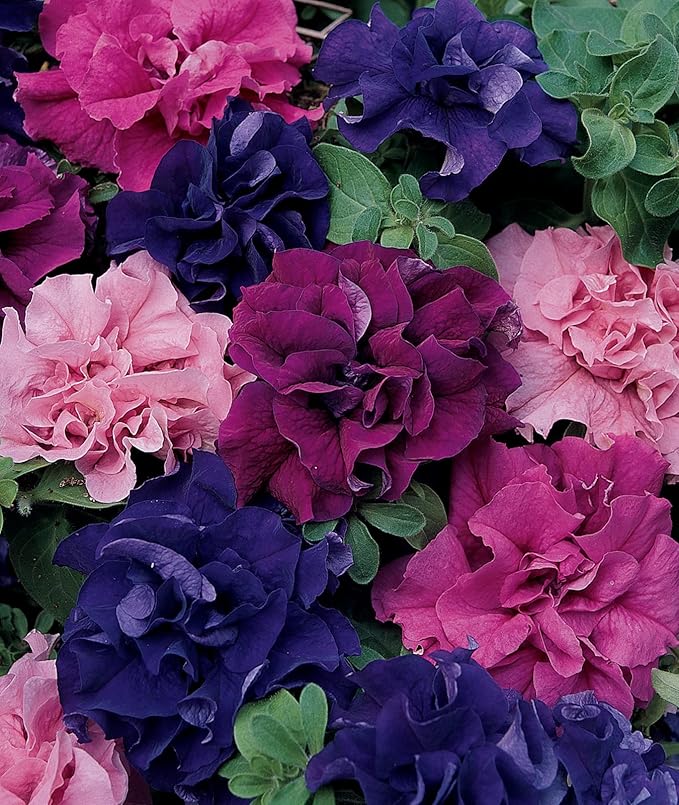
Sky Blue Double Petunia Hybrid Flower Seeds for Home & Garden
Sky Blue Double Petunia Hybrid Flower Seeds for Home & Garden
Bonsai Petunia Petals (Double Hybrid Mix)
Characteristics and Uses of Bonsai Petunia Petals
Bonsai Petunia Petals, featuring a stunning double hybrid mix, are a delightful addition to any garden or container. Known for their vibrant colors and lush, full blooms, these petite flowers are perfect for creating eye-catching displays. Their compact growth habit makes them ideal for small spaces, hanging baskets, and window boxes. With a long blooming season, these petunias not only enhance the beauty of your garden but also attract pollinators, making them a favorite among gardeners of all levels.
Growing Conditions for Bonsai Petunia Plants
- Light Requirements: Prefers full sun for optimal growth and blooming.
- Soil Type: Thrives in well-drained, nutrient-rich soil.
- Temperature: Best suited for moderate temperatures, avoiding extreme heat or cold.
Planting Tips for Bonsai Petunia
- Start seeds indoors 8-10 weeks before the last frost date for early blooms.
- Transplant seedlings outdoors after the danger of frost has passed.
- Space plants about 10-12 inches apart to allow for proper air circulation and growth.
Watering Instructions and Tips
- Water regularly, ensuring the soil remains consistently moist but not soggy.
- Allow the top inch of soil to dry out between waterings to prevent root rot.
- Consider using a drip irrigation system for consistent moisture levels.
Growing Zones
Bonsai Petunia Petals are suitable for USDA zones 9-11 and can thrive in various global zones, making them a versatile choice for gardeners in different climates.
Key Benefits & Uses
- Long blooming period provides continuous color throughout the growing season.
- Compact size makes them perfect for containers and small spaces.
- Attracts beneficial pollinators such as bees and butterflies.
Best Uses in the Garden & Landscape
- Ideal for hanging baskets, window boxes, and patio containers.
- Great for creating colorful borders and flower beds.
- Can be used in mixed arrangements for added texture and color.
Conclusion
Bonsai Petunia Petals are an exceptional choice for gardeners looking to add vibrant color and charm to their outdoor spaces. As a big, trusted name in the seed world, Dhara Seeds offers a wide range of high-quality, non-GMO varieties to gardeners everywhere. Whether you are a novice or an experienced gardener, these delightful flowers are sure to enhance your garden.
FAQ
How do I grow Bonsai Petunia Petals?
To grow Bonsai Petunia Petals, start seeds indoors 8-10 weeks before the last frost, then transplant them outdoors after the frost danger has passed. Ensure they receive adequate sunlight and water regularly to promote healthy growth.
When is the best time to plant Bonsai Petunia Petals?
The best time to plant Bonsai Petunia Petals is in the spring after the last frost, allowing the plants to establish before the heat of summer.
Are Bonsai Petunia Petals difficult to grow?
Bonsai Petunia Petals are relatively easy to grow and maintain, making them suitable for gardeners of all levels. With proper care, they can thrive and produce beautiful blooms throughout the season.
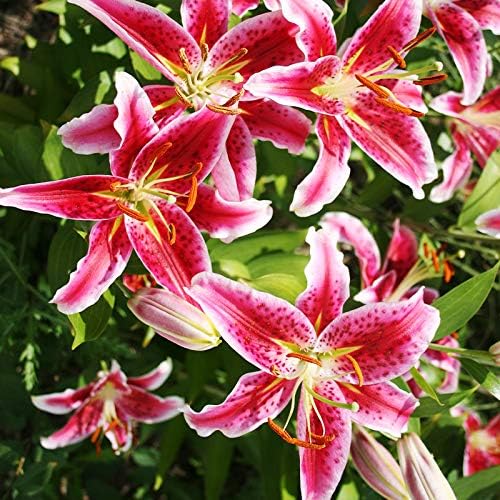
Orange Lily Perennial Flower Seeds for Home & Garden
Orange Lily Perennial Flower Seeds for Home & Garden
Bonsai Lily Seeds (Indoor, Perennial, Orange)
Characteristics and Uses of Bonsai Lily Plants
Bonsai Lily Seeds produce stunning indoor perennial plants that showcase vibrant orange blooms, adding a splash of color to any indoor space. These compact lilies are perfect for small pots and containers, making them an excellent choice for urban gardeners or those with limited space. Known for their delightful fragrance and elegant appearance, Bonsai Lilies are not only visually appealing but also serve as a wonderful addition to indoor decor, enhancing the ambiance of any room.
Growing Conditions for Bonsai Lily Plants
- Light Requirements: Prefers bright, indirect sunlight for optimal growth.
- Soil Type: Thrives in well-drained, nutrient-rich potting mix.
- Temperature: Best suited for moderate indoor temperatures, ideally between 65°F to 75°F.
Planting Tips for Bonsai Lily
- Start seeds indoors in pots filled with a quality potting mix.
- Plant seeds about 1/4 inch deep and cover lightly with soil.
- Keep the soil consistently moist but not soggy until germination occurs.
Watering Instructions and Tips
- Water regularly, allowing the top inch of soil to dry out between waterings.
- Use room temperature water to avoid shocking the plant.
- Reduce watering during the dormant season to prevent overwatering.
Growing Zones
Bonsai Lily is suitable for USDA zones 3-9 and can thrive in various global zones, making it a versatile choice for indoor gardening enthusiasts.
Key Benefits & Uses
- Long-lasting blooms provide continuous color and fragrance indoors.
- Compact size makes them ideal for small spaces and indoor arrangements.
- Low maintenance and easy to care for, perfect for gardeners of all levels.
Best Uses in the Garden & Landscape
- Ideal for indoor pots, window sills, and tabletops.
- Great for creating vibrant displays in living rooms and offices.
- Can be used in mixed arrangements with other indoor plants for added texture.
Conclusion
Bonsai Lily Seeds are an exceptional choice for those looking to enhance their indoor spaces with beautiful, fragrant blooms. As a big, trusted name in the seed world, Dhara Seeds offers a wide range of high-quality, non-GMO varieties to gardeners everywhere. Whether you are a novice or an experienced gardener, these delightful flowers are sure to brighten your home.
FAQ
How do I grow Bonsai Lily Seeds?
To grow Bonsai Lily Seeds, start by planting them indoors in a well-drained potting mix. Keep the soil moist and provide bright, indirect sunlight until the seeds germinate.
When is the best time to plant Bonsai Lily Seeds?
The best time to plant Bonsai Lily Seeds is in the spring, allowing them to establish before the warmer months.
Are Bonsai Lilies difficult to grow?
Bonsai Lilies are relatively easy to grow and maintain, making them suitable for gardeners of all levels. With proper care, they can thrive and produce beautiful blooms indoors.
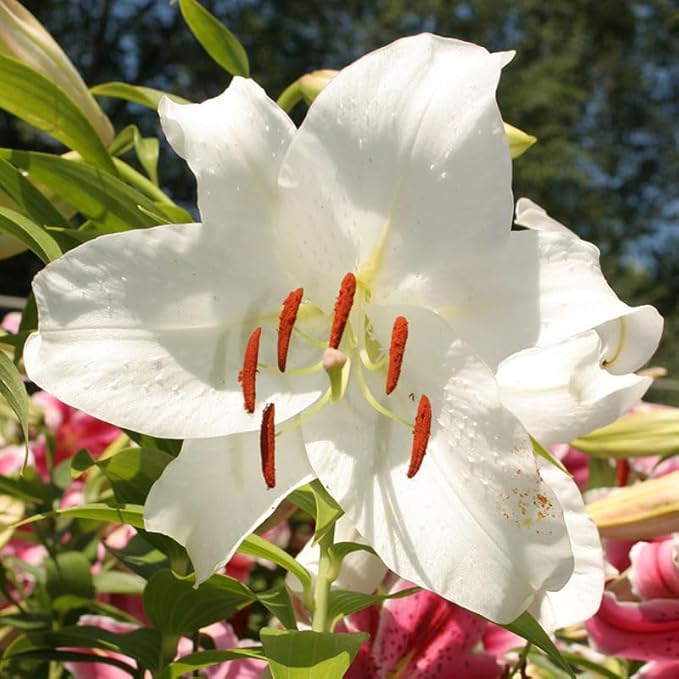
Pure White Lily Perennial Flower Seeds for Home & Garden
Pure White Lily Perennial Flower Seeds for Home & Garden
Bonsai Lily Seeds (Indoor, Perennial, Pure White)
Characteristics and Uses of Bonsai Lily Plants
Bonsai Lily Seeds produce exquisite indoor perennial plants that showcase pure white blooms, adding a touch of elegance to any indoor environment. These compact lilies are perfect for small pots and containers, making them an excellent choice for urban gardeners or those with limited space. Known for their delicate fragrance and graceful appearance, Bonsai Lilies not only enhance the aesthetic appeal of your home but also serve as a wonderful addition to indoor decor, creating a serene and inviting atmosphere.
Growing Conditions for Bonsai Lily Plants
- Light Requirements: Prefers bright, indirect sunlight for optimal growth.
- Soil Type: Thrives in well-drained, nutrient-rich potting mix.
- Temperature: Best suited for moderate indoor temperatures, ideally between 65°F to 75°F.
Planting Tips for Bonsai Lily
- Start seeds indoors in pots filled with a quality potting mix.
- Plant seeds about 1/4 inch deep and cover lightly with soil.
- Keep the soil consistently moist but not soggy until germination occurs.
Watering Instructions and Tips
- Water regularly, allowing the top inch of soil to dry out between waterings.
- Use room temperature water to avoid shocking the plant.
- Reduce watering during the dormant season to prevent overwatering.
Growing Zones
Bonsai Lily is suitable for USDA zones 3-9 and can thrive in various global zones, making it a versatile choice for indoor gardening enthusiasts.
Key Benefits & Uses
- Long-lasting blooms provide continuous color and fragrance indoors.
- Compact size makes them ideal for small spaces and indoor arrangements.
- Low maintenance and easy to care for, perfect for gardeners of all levels.
Best Uses in the Garden & Landscape
- Ideal for indoor pots, window sills, and tabletops.
- Great for creating vibrant displays in living rooms and offices.
- Can be used in mixed arrangements with other indoor plants for added texture.
Conclusion
Bonsai Lily Seeds are an exceptional choice for those looking to enhance their indoor spaces with beautiful, fragrant blooms. As a big, trusted name in the seed world, Dhara Seeds offers a wide range of high-quality, non-GMO varieties to gardeners everywhere. Whether you are a novice or an experienced gardener, these delightful flowers are sure to brighten your home.
FAQ
How do I grow Bonsai Lily Seeds?
To grow Bonsai Lily Seeds, start by planting them indoors in a well-drained potting mix. Keep the soil moist and provide bright, indirect sunlight until the seeds germinate.
When is the best time to plant Bonsai Lily Seeds?
The best time to plant Bonsai Lily Seeds is in the spring, allowing them to establish before the warmer months.
Are Bonsai Lilies difficult to grow?
Bonsai Lilies are relatively easy to grow and maintain, making them suitable for gardeners of all levels. With proper care, they can thrive and produce beautiful blooms indoors.
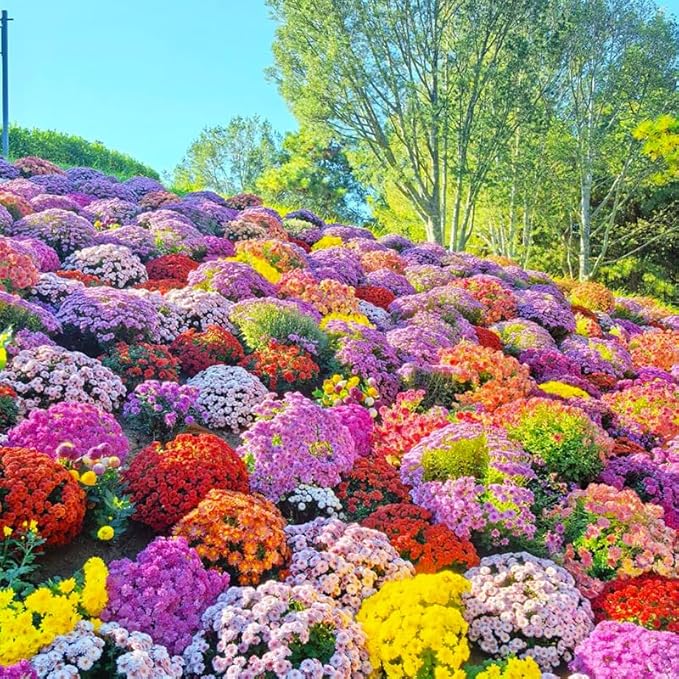
Japanese Rainbow Chrysanthemum Flower Seeds for Home & Garden
Japanese Rainbow Chrysanthemum Flower Seeds for Home & Garden
Bonsai Chrysanthemum Seeds (Japanese Rainbow)
Characteristics and Uses of Bonsai Chrysanthemum Plants
Bonsai Chrysanthemum Seeds, specifically the Japanese Rainbow variety, produce stunning, compact plants that showcase a vibrant array of colors, making them a delightful addition to any garden or indoor space. These unique flowers are known for their intricate petal formations and long-lasting blooms, which can brighten up any environment. Ideal for bonsai enthusiasts and flower lovers alike, these chrysanthemums are perfect for creating eye-catching displays in pots, containers, or as part of a floral arrangement.
Growing Conditions for Bonsai Chrysanthemum Plants
- Light Requirements: Prefers full sun to partial shade for optimal growth.
- Soil Type: Thrives in well-drained, fertile soil rich in organic matter.
- Temperature: Best suited for moderate temperatures, ideally between 60°F to 75°F.
Planting Tips for Bonsai Chrysanthemum
- Start seeds indoors 8-10 weeks before the last frost date for early blooms.
- Transplant seedlings outdoors after the danger of frost has passed.
- Space plants about 12-18 inches apart to allow for proper air circulation and growth.
Watering Instructions and Tips
- Water regularly, keeping the soil consistently moist but not waterlogged.
- Allow the top inch of soil to dry out between waterings to prevent root rot.
- Consider using a drip irrigation system for consistent moisture levels.
Growing Zones
Bonsai Chrysanthemum is suitable for USDA zones 5-9 and can thrive in various global zones, making it a versatile choice for gardeners in different climates.
Key Benefits & Uses
- Long-lasting blooms provide continuous color throughout the growing season.
- Compact size makes them ideal for containers and small spaces.
- Attracts beneficial pollinators such as bees and butterflies.
Best Uses in the Garden & Landscape
- Perfect for borders, containers, and rock gardens.
- Great for creating vibrant displays in flower beds and patios.
- Can be used in cut flower arrangements for indoor decoration.
Conclusion
Bonsai Chrysanthemum Seeds (Japanese Rainbow) are an exceptional choice for gardeners looking to add beauty and color to their outdoor and indoor spaces. As a big, trusted name in the seed world, Dhara Seeds offers a wide range of high-quality, non-GMO varieties to gardeners everywhere. Whether you are a novice or an experienced gardener, these delightful flowers are sure to enhance your garden.
FAQ
How do I grow Bonsai Chrysanthemum Seeds?
To grow Bonsai Chrysanthemum Seeds, start by planting them indoors in a well-drained potting mix. Keep the soil moist and provide bright, indirect sunlight until the seeds germinate.
When is the best time to plant Bonsai Chrysanthemum Seeds?
The best time to plant Bonsai Chrysanthemum Seeds is in the spring after the last frost, allowing the plants to establish before the warmer months.
Are Bonsai Chrysanthemums difficult to grow?
Bonsai Chrysanthemums are relatively easy to grow and maintain, making them suitable for gardeners of all levels. With proper care, they can thrive and produce beautiful blooms throughout the season.
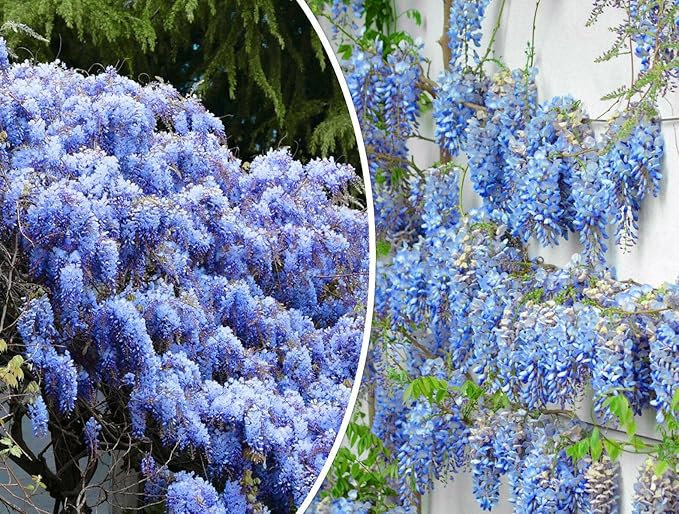
Blue Japanese Lilac Carnation Flower Seeds for Home & Garden
Blue Japanese Lilac Carnation Flower Seeds for Home & Garden
Blue Japanese Lilac Seeds (Extremely Fragrant)
Characteristics and Uses of Blue Japanese Lilac Plants
Blue Japanese Lilac Seeds produce stunning, fragrant plants that are a favorite among gardeners for their beautiful blue flowers and delightful scent. These deciduous shrubs are known for their compact growth habit and can be used to create vibrant hedges or as standalone specimens in any garden. The extremely fragrant blooms not only enhance the aesthetic appeal of your outdoor space but also attract pollinators, making them a valuable addition to any garden. Ideal for both novice and experienced gardeners, these lilacs bring a touch of elegance and charm to any landscape.
Growing Conditions for Blue Japanese Lilac Plants
- Light Requirements: Prefers full sun for optimal blooming.
- Soil Type: Thrives in well-drained, loamy soil rich in organic matter.
- Temperature: Best suited for moderate climates, tolerating a range of temperatures.
Planting Tips for Blue Japanese Lilac
- Start seeds indoors 6-8 weeks before the last frost date for early blooms.
- Transplant seedlings outdoors after the danger of frost has passed.
- Space plants about 3-4 feet apart to allow for proper air circulation and growth.
Watering Instructions and Tips
- Water regularly during the first growing season to establish strong roots.
- Once established, Blue Japanese Lilacs are drought-tolerant but benefit from occasional watering during dry spells.
- Avoid overwatering to prevent root rot; allow the soil to dry out between waterings.
Growing Zones
Blue Japanese Lilac is suitable for USDA zones 3-7 and can thrive in various global zones, making it a versatile choice for gardeners in different climates.
Key Benefits & Uses
- Extremely fragrant blooms provide a delightful scent throughout the growing season.
- Attractive foliage and flowers enhance the beauty of any garden.
- Low maintenance and easy to care for, perfect for gardeners of all levels.
Best Uses in the Garden & Landscape
- Ideal for creating fragrant hedges or borders in gardens.
- Great for planting near patios or walkways to enjoy their scent.
- Can be used in mixed flower beds for added color and texture.
Conclusion
Blue Japanese Lilac Seeds are an exceptional choice for those looking to enhance their gardens with beautiful, fragrant blooms. As a big, trusted name in the seed world, Dhara Seeds offers a wide range of high-quality, non-GMO varieties to gardeners everywhere. Whether you are a novice or an experienced gardener, these delightful lilacs are sure to elevate your outdoor space.
FAQ
How do I grow Blue Japanese Lilac Seeds?
To grow Blue Japanese Lilac Seeds, start by planting them indoors in a well-drained potting mix. Keep the soil moist and provide full sun until the seeds germinate, then transplant them outdoors after the last frost.
When is the best time to plant Blue Japanese Lilac Seeds?
The best time to plant Blue Japanese Lilac Seeds is in the spring after the last frost, allowing the plants to establish before the warmer months.
Are Blue Japanese Lilacs difficult to grow?
Blue Japanese Lilacs are relatively easy to grow and maintain, making them suitable for gardeners of all levels. With proper care, they can thrive and produce beautiful, fragrant blooms throughout the season.
Begonia Seeds (Balcony/Yard, Coleus Variety)
Characteristics and Uses of Begonia Plants
Begonia Seeds from the Coleus variety are a vibrant addition to any balcony or yard, known for their stunning foliage and colorful patterns. These plants are cherished for their ability to thrive in various conditions, making them perfect for both novice and experienced gardeners. With their lush leaves and diverse color palette, Coleus begonias can enhance the aesthetic appeal of any outdoor space, providing a lively backdrop for other plants and flowers. They are also excellent for container gardening, allowing for creative arrangements that can brighten up patios and decks.
Growing Conditions for Begonia Plants
- Light Requirements: Prefers partial shade to full shade for optimal growth.
- Soil Type: Thrives in well-drained, rich potting soil with good organic content.
- Temperature: Best suited for moderate temperatures, ideally between 60°F to 75°F.
Planting Tips for Begonia
- Start seeds indoors 8-10 weeks before the last frost date for early blooms.
- Transplant seedlings outdoors after the danger of frost has passed.
- Space plants about 12-18 inches apart to allow for proper air circulation and growth.
Watering Instructions and Tips
- Water regularly, keeping the soil consistently moist but not soggy.
- Allow the top inch of soil to dry out between waterings to prevent root rot.
- Use room temperature water to avoid shocking the plants.
Growing Zones
Begonia plants are suitable for USDA zones 9-11 and can thrive in various global zones, making them a versatile choice for gardeners in different climates.
Key Benefits & Uses
- Vibrant foliage adds color and interest to any garden or container.
- Low maintenance and easy to care for, perfect for gardeners of all levels.
- Can be used in mixed arrangements for added texture and visual appeal.
Best Uses in the Garden & Landscape
- Ideal for container gardening on balconies, patios, and decks.
- Great for creating colorful borders and accents in flower beds.
- Can be used in hanging baskets for a cascading effect.
Conclusion
Begonia Seeds (Coleus variety) are an exceptional choice for those looking to enhance their outdoor spaces with beautiful, colorful foliage. As a big, trusted name in the seed world, Dhara Seeds offers a wide range of high-quality, non-GMO varieties to gardeners everywhere. Whether you are a novice or an experienced gardener, these delightful begonias are sure to brighten your garden.
FAQ
How do I grow Begonia Seeds?
To grow Begonia Seeds, start by planting them indoors in a well-drained potting mix. Keep the soil moist and provide partial shade until the seeds germinate, then transplant them outdoors after the last frost.
When is the best time to plant Begonia Seeds?
The best time to plant Begonia Seeds is in the spring, after the last frost, allowing the plants to establish before the warmer months.
Are Begonias difficult to grow?
Begonias are relatively easy to grow and maintain, making them suitable for gardeners of all levels. With proper care, they can thrive and provide beautiful foliage throughout the growing season.
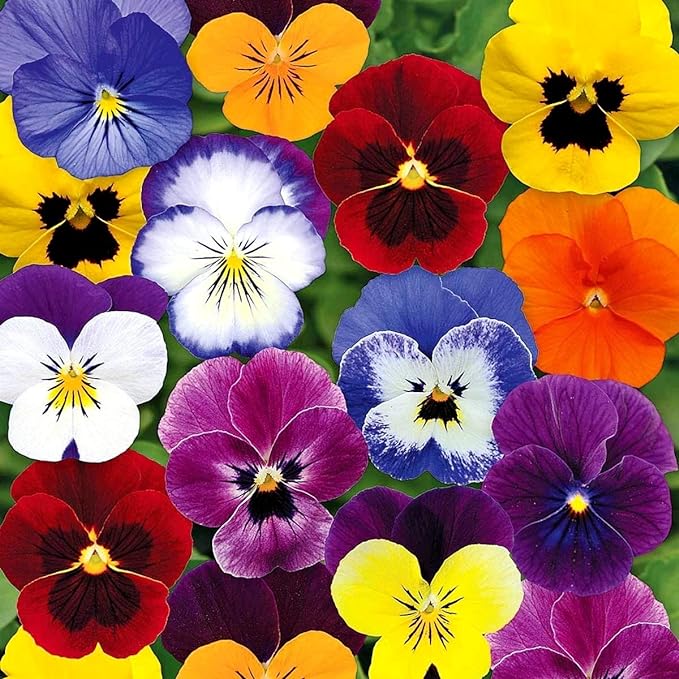
Viola Tricolor Pansy Flower Seeds for Home & Garden
Viola Tricolor Pansy Flower Seeds for Home & Garden
Pansy Seeds (Various Colors, Wavy Viola Tricolor)
Characteristics and Uses of Pansy Plants
Pansy Seeds from the Wavy Viola Tricolor variety are a delightful addition to any garden, known for their vibrant colors and unique wavy petal structure. These charming flowers are perfect for adding a splash of color to borders, containers, and hanging baskets. Pansies are not only visually appealing but also hardy, making them suitable for early spring and fall gardens. Their ability to thrive in cooler temperatures allows gardeners to enjoy their beauty for extended periods, making them a favorite among flower enthusiasts.
Growing Conditions for Pansy Plants
- Light Requirements: Prefers full sun to partial shade for optimal growth.
- Soil Type: Thrives in well-drained, fertile soil rich in organic matter.
- Temperature: Best suited for cooler climates, ideally between 45°F to 65°F.
Planting Tips for Pansy
- Start seeds indoors 8-10 weeks before the last frost date for early blooms.
- Transplant seedlings outdoors after the danger of frost has passed.
- Space plants about 6-12 inches apart to allow for proper air circulation and growth.
Watering Instructions and Tips
- Water regularly, keeping the soil consistently moist but not soggy.
- Allow the top inch of soil to dry out between waterings to prevent root rot.
- Water in the morning to reduce evaporation and fungal diseases.
Growing Zones
Pansy plants are suitable for USDA zones 6-10 and can thrive in various global zones, making them a versatile choice for gardeners in different climates.
Key Benefits & Uses
- Vibrant colors enhance the beauty of any garden or container.
- Low maintenance and easy to care for, perfect for gardeners of all levels.
- Can be used in mixed arrangements for added texture and visual appeal.
Best Uses in the Garden & Landscape
- Ideal for creating colorful borders and accents in flower beds.
- Great for container gardening on patios, balconies, and decks.
- Can be used in hanging baskets for a cascading effect.
Conclusion
Pansy Seeds (Wavy Viola Tricolor) are an exceptional choice for those looking to enhance their outdoor spaces with beautiful, colorful blooms. As a big, trusted name in the seed world, Dhara Seeds offers a wide range of high-quality, non-GMO varieties to gardeners everywhere. Whether you are a novice or an experienced gardener, these delightful pansies are sure to brighten your garden.
FAQ
How do I grow Pansy Seeds?
To grow Pansy Seeds, start by planting them indoors in a well-drained potting mix. Keep the soil moist and provide full sun to partial shade until the seeds germinate, then transplant them outdoors after the last frost.
When is the best time to plant Pansy Seeds?
The best time to plant Pansy Seeds is in the spring or fall, allowing the plants to establish before the heat of summer or the cold of winter.
Are Pansies difficult to grow?
Pansies are relatively easy to grow and maintain, making them suitable for gardeners of all levels. With proper care, they can thrive and provide beautiful blooms throughout the growing season.
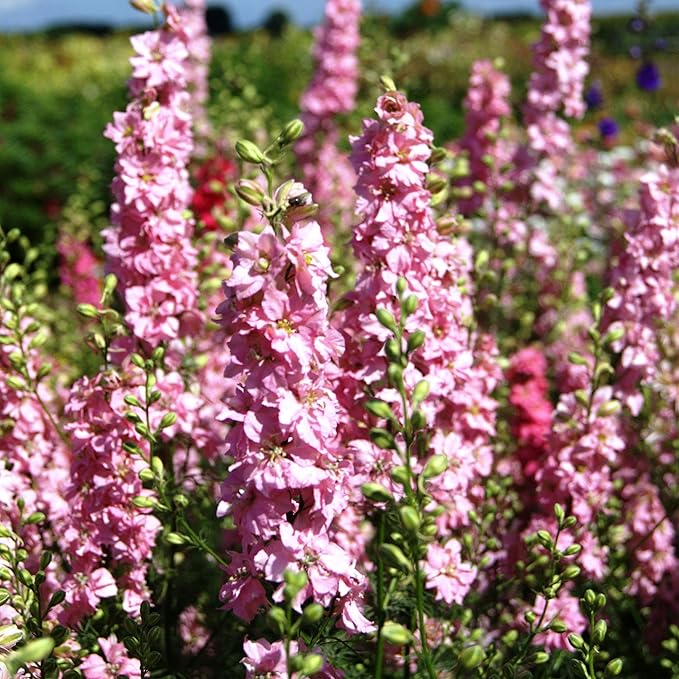
Gypsophila Paniculata Starry Flower Seeds for Potted & Garden Planting
Gypsophila Paniculata Starry Flower Seeds for Potted & Garden Planting
Beautiful Aromatic Gypsophila Seeds (Starry Flowers)
Characteristics and Uses of Gypsophila Plants
Beautiful Aromatic Gypsophila, commonly known as Baby's Breath, is a charming flower renowned for its delicate, starry blooms and sweet fragrance. This perennial plant produces a profusion of tiny white or pink flowers that create a stunning visual effect, making it a popular choice for bouquets and floral arrangements. Gypsophila is not only aesthetically pleasing but also serves as a wonderful filler flower, adding texture and depth to any floral display. Its ability to thrive in various conditions makes it a favorite among gardeners looking to enhance their gardens with low-maintenance yet beautiful plants.
Growing Conditions for Gypsophila Plants
- Light Requirements: Prefers full sun for optimal growth and flowering.
- Soil Type: Thrives in well-drained, sandy or loamy soil with good fertility.
- Temperature: Best suited for moderate climates, tolerating a range of temperatures.
Planting Tips for Gypsophila
- Start seeds indoors 6-8 weeks before the last frost date for early blooms.
- Transplant seedlings outdoors after the danger of frost has passed.
- Space plants about 12-18 inches apart to allow for proper air circulation and growth.
Watering Instructions and Tips
- Water regularly, especially during dry spells, to keep the soil consistently moist but not soggy.
- Once established, Gypsophila is relatively drought-tolerant but benefits from occasional deep watering.
- Avoid waterlogging, as this can lead to root rot; ensure proper drainage.
Growing Zones
Gypsophila is suitable for USDA zones 3-9 and can thrive in various global zones, making it a versatile choice for gardeners in different climates.
Key Benefits & Uses
- Beautiful, fragrant blooms provide continuous color throughout the growing season.
- Low maintenance and easy to care for, perfect for gardeners of all levels.
- Can be used in cut flower arrangements, enhancing the beauty of any bouquet.
Best Uses in the Garden & Landscape
- Ideal for creating borders and filling gaps in flower beds.
- Great for container gardening, adding charm to patios and balconies.
- Can be used in wildflower gardens for a natural look.
Conclusion
Beautiful Aromatic Gypsophila Seeds (Starry Flowers) are an exceptional choice for those looking to enhance their gardens with lovely, fragrant blooms. As a big, trusted name in the seed world, Dhara Seeds offers a wide range of high-quality, non-GMO varieties to gardeners everywhere. Whether you are a novice or an experienced gardener, these delightful flowers are sure to brighten your garden.
FAQ
How do I grow Gypsophila Seeds?
To grow Gypsophila Seeds, start by planting them indoors in a well-drained potting mix. Keep the soil moist and provide full sun until the seeds germinate, then transplant them outdoors after the last frost.
When is the best time to plant Gypsophila Seeds?
The best time to plant Gypsophila Seeds is in the spring after the last frost, allowing the plants to establish before the warmer months.
Are Gypsophila difficult to grow?
Gypsophila is relatively easy to grow and maintain, making it suitable for gardeners of all levels. With proper care, it can thrive and provide beautiful, starry blooms throughout the growing season.
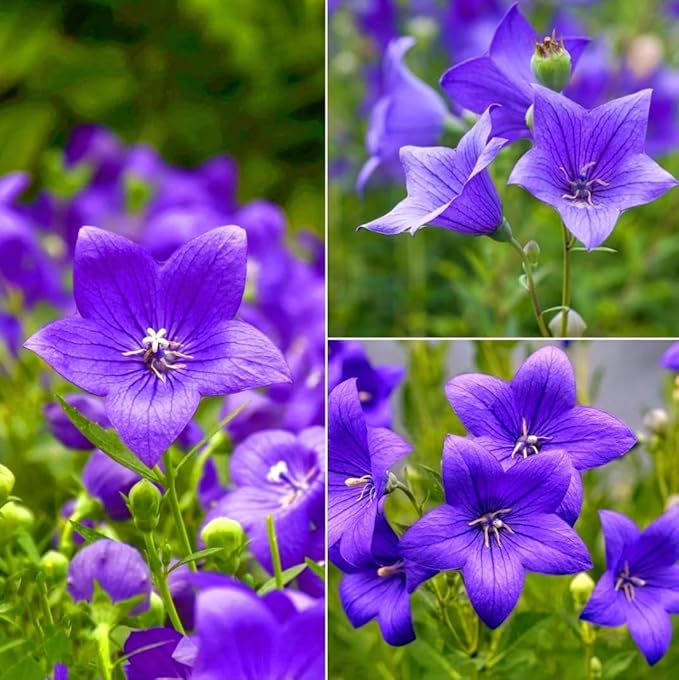
Platycodon Grandiflorus Balloon Flower Seeds for Multi-Color Garden
Platycodon Grandiflorus Balloon Flower Seeds for Multi-Color Garden
Balloon Flower Bonsai Seeds (Platycodon)
Characteristics and Uses of Balloon Flower Plants
Balloon Flower Bonsai Seeds, derived from the Platycodon species, produce unique and charming plants known for their distinctive balloon-like buds that burst into beautiful star-shaped flowers. These perennial plants are not only visually appealing but also versatile, making them suitable for bonsai cultivation, container gardening, and traditional flower beds. Their vibrant blue, purple, or white blooms add a delightful touch to any garden, while their compact growth habit makes them ideal for small spaces. Balloon flowers are also known for attracting pollinators, enhancing the biodiversity of your garden.
Growing Conditions for Balloon Flower Plants
- Light Requirements: Prefers full sun to partial shade for optimal growth.
- Soil Type: Thrives in well-drained, fertile soil rich in organic matter.
- Temperature: Best suited for moderate climates, tolerating a range of temperatures.
Planting Tips for Balloon Flower
- Start seeds indoors 6-8 weeks before the last frost date for early blooms.
- Transplant seedlings outdoors after the danger of frost has passed.
- Space plants about 12-18 inches apart to allow for proper air circulation and growth.
Watering Instructions and Tips
- Water regularly, keeping the soil consistently moist but not soggy.
- Allow the top inch of soil to dry out between waterings to prevent root rot.
- Water in the morning to reduce evaporation and fungal diseases.
Growing Zones
Balloon Flower is suitable for USDA zones 3-9 and can thrive in various global zones, making it a versatile choice for gardeners in different climates.
Key Benefits & Uses
- Unique balloon-shaped buds provide visual interest before blooming.
- Low maintenance and easy to care for, perfect for gardeners of all levels.
- Can be used in mixed arrangements for added texture and color.
Best Uses in the Garden & Landscape
- Ideal for creating colorful borders and accents in flower beds.
- Great for container gardening on patios, balconies, and decks.
- Can be used in rock gardens for a natural look.
Conclusion
Balloon Flower Bonsai Seeds (Platycodon) are an exceptional choice for those looking to enhance their gardens with unique and beautiful blooms. As a big, trusted name in the seed world, Dhara Seeds offers a wide range of high-quality, non-GMO varieties to gardeners everywhere. Whether you are a novice or an experienced gardener, these delightful flowers are sure to brighten your garden.
FAQ
How do I grow Balloon Flower Seeds?
To grow Balloon Flower Seeds, start by planting them indoors in a well-drained potting mix. Keep the soil moist and provide full sun to partial shade until the seeds germinate, then transplant them outdoors after the last frost.
When is the best time to plant Balloon Flower Seeds?
The best time to plant Balloon Flower Seeds is in the spring after the last frost, allowing the plants to establish before the warmer months.
Are Balloon Flowers difficult to grow?
Balloon Flowers are relatively easy to grow and maintain, making them suitable for gardeners of all levels. With proper care, they can thrive and provide beautiful blooms throughout the growing season.
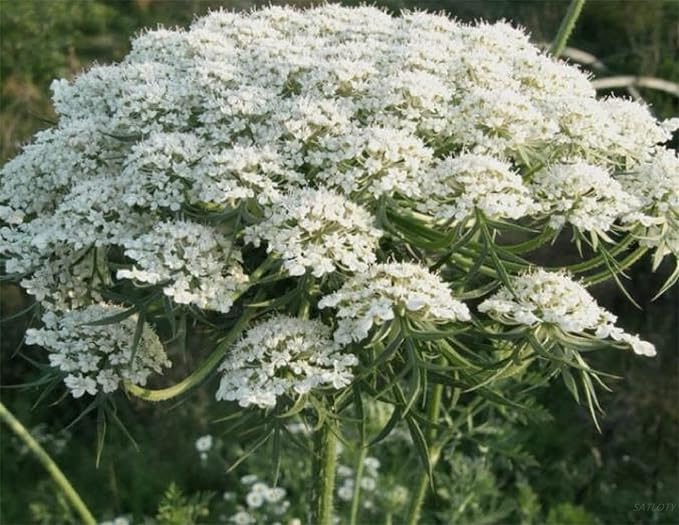
Baby’s Breath Fragrant Flower Seeds for Indoor & Garden
Baby’s Breath Fragrant Flower Seeds for Indoor & Garden
Babysbreath Bonsai Seeds (Fragrant)
Characteristics and Uses of Babysbreath Plants
Babysbreath, known scientifically as Gypsophila, is a charming and fragrant flower that adds a delicate touch to any garden or bonsai arrangement. These plants are characterized by their airy clusters of tiny white or pink flowers, which create a beautiful contrast against their lush green foliage. Babysbreath is not only visually appealing but also highly versatile, making it an excellent choice for floral arrangements, wedding bouquets, and as a filler flower in mixed bouquets. Its delightful fragrance enhances the sensory experience of any garden, making it a favorite among gardeners and floral enthusiasts alike.
Growing Conditions for Babysbreath Plants
- Light Requirements: Prefers full sun for optimal growth and flowering.
- Soil Type: Thrives in well-drained, sandy or loamy soil rich in organic matter.
- Temperature: Best suited for moderate climates, tolerating a range of temperatures.
Planting Tips for Babysbreath
- Start seeds indoors 6-8 weeks before the last frost date for early blooms.
- Transplant seedlings outdoors after the danger of frost has passed.
- Space plants about 12-18 inches apart to allow for proper air circulation and growth.
Watering Instructions and Tips
- Water regularly, keeping the soil consistently moist but not soggy.
- Allow the top inch of soil to dry out between waterings to prevent root rot.
- Water in the morning to reduce evaporation and fungal diseases.
Growing Zones
Babysbreath is suitable for USDA zones 3-9 and can thrive in various global zones, making it a versatile choice for gardeners in different climates.
Key Benefits & Uses
- Fragrant blooms provide a delightful scent throughout the growing season.
- Low maintenance and easy to care for, perfect for gardeners of all levels.
- Can be used in cut flower arrangements, enhancing the beauty of any bouquet.
Best Uses in the Garden & Landscape
- Ideal for creating borders and filling gaps in flower beds.
- Great for container gardening, adding charm to patios and balconies.
- Can be used in wildflower gardens for a natural look.
Conclusion
Babysbreath Bonsai Seeds (Fragrant) are an exceptional choice for those looking to enhance their gardens with lovely, aromatic blooms. As a big, trusted name in the seed world, Dhara Seeds offers a wide range of high-quality, non-GMO varieties to gardeners everywhere. Whether you are a novice or an experienced gardener, these delightful flowers are sure to brighten your garden.
FAQ
How do I grow Babysbreath Seeds?
To grow Babysbreath Seeds, start by planting them indoors in a well-drained potting mix. Keep the soil moist and provide full sun until the seeds germinate, then transplant them outdoors after the last frost.
When is the best time to plant Babysbreath Seeds?
The best time to plant Babysbreath Seeds is in the spring after the last frost, allowing the plants to establish before the warmer months.
Are Babysbreath difficult to grow?
Babysbreath is relatively easy to grow and maintain, making it suitable for gardeners of all levels. With proper care, it can thrive and provide beautiful, fragrant blooms throughout the growing season.
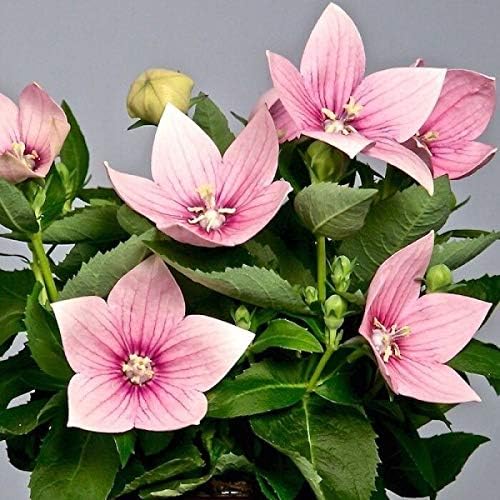
Pink Astra Balloon Flower Rare Perennial Seeds for Home & Garden
Pink Astra Balloon Flower Rare Perennial Seeds for Home & Garden
Astra Pink Balloon Flower Seeds
Characteristics and Uses of Astra Pink Balloon Flower Plants
Astra Pink Balloon Flower Seeds produce stunning plants known for their unique balloon-shaped buds that open into beautiful star-like flowers. The Astra Pink variety features vibrant pink blooms that add a delightful pop of color to any garden. These perennial plants are not only visually appealing but also versatile, making them suitable for borders, containers, and mixed flower beds. Their compact growth habit and long-lasting blooms make them a favorite among gardeners looking to enhance their outdoor spaces with low-maintenance yet striking flowers.
Growing Conditions for Astra Pink Balloon Flower Plants
- Light Requirements: Prefers full sun to partial shade for optimal growth.
- Soil Type: Thrives in well-drained, fertile soil rich in organic matter.
- Temperature: Best suited for moderate climates, tolerating a range of temperatures.
Planting Tips for Astra Pink Balloon Flower
- Start seeds indoors 6-8 weeks before the last frost date for early blooms.
- Transplant seedlings outdoors after the danger of frost has passed.
- Space plants about 12-18 inches apart to allow for proper air circulation and growth.
Watering Instructions and Tips
- Water regularly, keeping the soil consistently moist but not soggy.
- Allow the top inch of soil to dry out between waterings to prevent root rot.
- Water in the morning to reduce evaporation and fungal diseases.
Growing Zones
Astra Pink Balloon Flower is suitable for USDA zones 3-9 and can thrive in various global zones, making it a versatile choice for gardeners in different climates.
Key Benefits & Uses
- Unique balloon-shaped buds provide visual interest before blooming.
- Low maintenance and easy to care for, perfect for gardeners of all levels.
- Can be used in mixed arrangements for added texture and color.
Best Uses in the Garden & Landscape
- Ideal for creating colorful borders and accents in flower beds.
- Great for container gardening on patios, balconies, and decks.
- Can be used in rock gardens for a natural look.
Conclusion
Astra Pink Balloon Flower Seeds are an exceptional choice for those looking to enhance their gardens with unique and beautiful blooms. As a big, trusted name in the seed world, Dhara Seeds offers a wide range of high-quality, non-GMO varieties to gardeners everywhere. Whether you are a novice or an experienced gardener, these delightful flowers are sure to brighten your garden.
FAQ
How do I grow Astra Pink Balloon Flower Seeds?
To grow Astra Pink Balloon Flower Seeds, start by planting them indoors in a well-drained potting mix. Keep the soil moist and provide full sun to partial shade until the seeds germinate, then transplant them outdoors after the last frost.
When is the best time to plant Astra Pink Balloon Flower Seeds?
The best time to plant Astra Pink Balloon Flower Seeds is in the spring after the last frost, allowing the plants to establish before the warmer months.
Are Astra Pink Balloon Flowers difficult to grow?
Astra Pink Balloon Flowers are relatively easy to grow and maintain, making them suitable for gardeners of all levels. With proper care, they can thrive and provide beautiful blooms throughout the growing season.
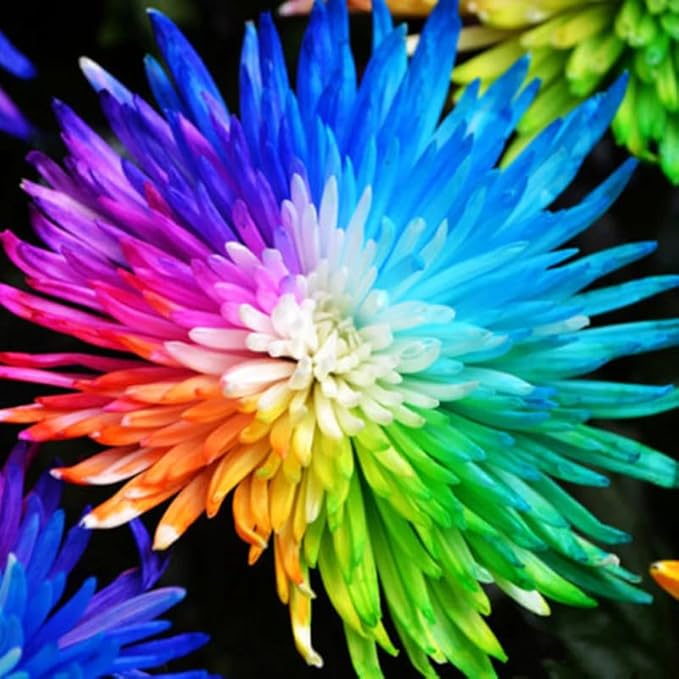
Rainbow Aster Perennial Flower Seeds for Home & Garden
Rainbow Aster Perennial Flower Seeds for Home & Garden
Aster Seeds (Rainbow Chrysanthemum)
Characteristics and Uses of Aster Plants
Aster Seeds, specifically the Rainbow Chrysanthemum variety, produce stunning plants known for their vibrant, daisy-like flowers that showcase a beautiful array of colors. These perennial plants are not only visually appealing but also highly versatile, making them ideal for various applications, including borders, containers, and cut flower arrangements. Their ability to attract pollinators and provide a late-season bloom makes them a favorite among gardeners looking to enhance their gardens with low-maintenance yet striking flowers.
Growing Conditions for Aster Plants
- Light Requirements: Prefers full sun to partial shade for optimal growth.
- Soil Type: Thrives in well-drained, fertile soil rich in organic matter.
- Temperature: Best suited for moderate climates, tolerating a range of temperatures.
Planting Tips for Aster
- Start seeds indoors 6-8 weeks before the last frost date for early blooms.
- Transplant seedlings outdoors after the danger of frost has passed.
- Space plants about 12-18 inches apart to allow for proper air circulation and growth.
Watering Instructions and Tips
- Water regularly, keeping the soil consistently moist but not soggy.
- Allow the top inch of soil to dry out between waterings to prevent root rot.
- Water in the morning to reduce evaporation and fungal diseases.
Growing Zones
Aster is suitable for USDA zones 3-9 and can thrive in various global zones, making it a versatile choice for gardeners in different climates.
Key Benefits & Uses
- Vibrant, daisy-like flowers provide continuous color throughout the growing season.
- Attracts pollinators, enhancing the biodiversity of your garden.
- Low maintenance and easy to care for, perfect for gardeners of all levels.
Best Uses in the Garden & Landscape
- Ideal for creating colorful borders and accents in flower beds.
- Great for container gardening on patios, balconies, and decks.
- Can be used in cut flower arrangements for a pop of color.
Conclusion
Aster Seeds (Rainbow Chrysanthemum) are an exceptional choice for those looking to enhance their gardens with beautiful, vibrant blooms. As a big, trusted name in the seed world, Dhara Seeds offers a wide range of high-quality, non-GMO varieties to gardeners everywhere. Whether you are a novice or an experienced gardener, these delightful flowers are sure to brighten your garden.
FAQ
How do I grow Aster Seeds?
To grow Aster Seeds, start by planting them indoors in a well-drained potting mix. Keep the soil moist and provide full sun to partial shade until the seeds germinate, then transplant them outdoors after the last frost.
When is the best time to plant Aster Seeds?
The best time to plant Aster Seeds is in the spring after the last frost, allowing the plants to establish before the warmer months.
Are Aster difficult to grow?
Aster are relatively easy to grow and maintain, making them suitable for gardeners of all levels. With proper care, they can thrive and provide beautiful blooms throughout the growing season.
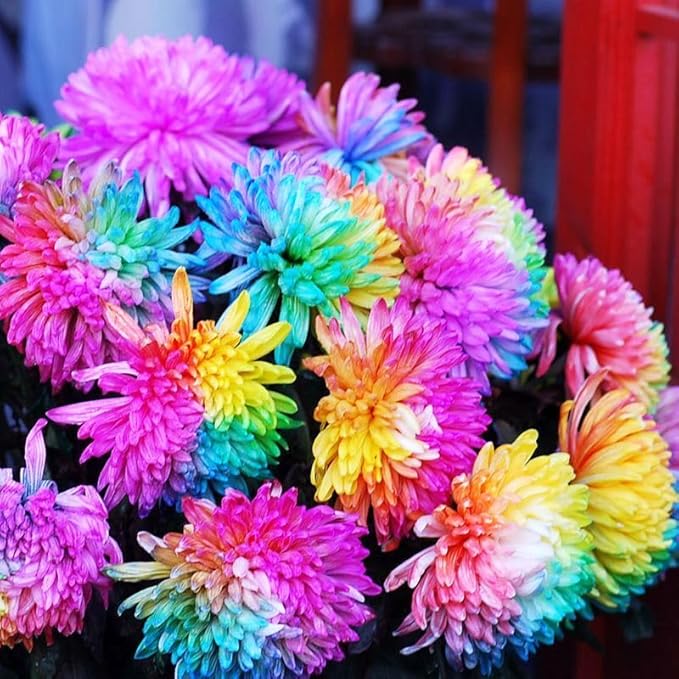
Black Rainbow Chrysanthemum Perennial Flower Seeds for Home Garden
Black Rainbow Chrysanthemum Perennial Flower Seeds for Home Garden
Rainbow Chrysanthemum Bonsai Seeds (Black)
Characteristics and Uses of Rainbow Chrysanthemum Plants
Rainbow Chrysanthemum Bonsai Seeds (Black) produce stunning plants known for their unique and striking black blooms, which add a dramatic flair to any garden or bonsai collection. These chrysanthemums are not only visually captivating but also versatile, making them suitable for various uses, including decorative pots, bonsai arrangements, and as focal points in flower beds. Their rich color and intricate petal structure make them a favorite among gardeners and floral enthusiasts, providing a bold contrast to other plants and flowers in the landscape.
Growing Conditions for Rainbow Chrysanthemum Plants
- Light Requirements: Prefers full sun to partial shade for optimal growth.
- Soil Type: Thrives in well-drained, fertile soil rich in organic matter.
- Temperature: Best suited for moderate climates, tolerating a range of temperatures.
Planting Tips for Rainbow Chrysanthemum
- Start seeds indoors 6-8 weeks before the last frost date for early blooms.
- Transplant seedlings outdoors after the danger of frost has passed.
- Space plants about 12-18 inches apart to allow for proper air circulation and growth.
Watering Instructions and Tips
- Water regularly, keeping the soil consistently moist but not soggy.
- Allow the top inch of soil to dry out between waterings to prevent root rot.
- Water in the morning to reduce evaporation and fungal diseases.
Growing Zones
Rainbow Chrysanthemum is suitable for USDA zones 5-9 and can thrive in various global zones, making it a versatile choice for gardeners in different climates.
Key Benefits & Uses
- Unique black blooms provide a striking visual impact in any garden.
- Low maintenance and easy to care for, perfect for gardeners of all levels.
- Can be used in mixed arrangements for added texture and color.
Best Uses in the Garden & Landscape
- Ideal for creating colorful borders and accents in flower beds.
- Great for container gardening on patios, balconies, and decks.
- Can be used in bonsai arrangements for a unique display.
Conclusion
Rainbow Chrysanthemum Bonsai Seeds (Black) are an exceptional choice for those looking to enhance their gardens with unique and beautiful blooms. As a big, trusted name in the seed world, Dhara Seeds offers a wide range of high-quality, non-GMO varieties to gardeners everywhere. Whether you are a novice or an experienced gardener, these delightful flowers are sure to brighten your garden.
FAQ
How do I grow Rainbow Chrysanthemum Seeds?
To grow Rainbow Chrysanthemum Seeds, start by planting them indoors in a well-drained potting mix. Keep the soil moist and provide full sun to partial shade until the seeds germinate, then transplant them outdoors after the last frost.
When is the best time to plant Rainbow Chrysanthemum Seeds?
The best time to plant Rainbow Chrysanthemum Seeds is in the spring after the last frost, allowing the plants to establish before the warmer months.
Are Rainbow Chrysanthemums difficult to grow?
Rainbow Chrysanthemums are relatively easy to grow and maintain, making them suitable for gardeners of all levels. With proper care, they can thrive and provide beautiful blooms throughout the growing season.
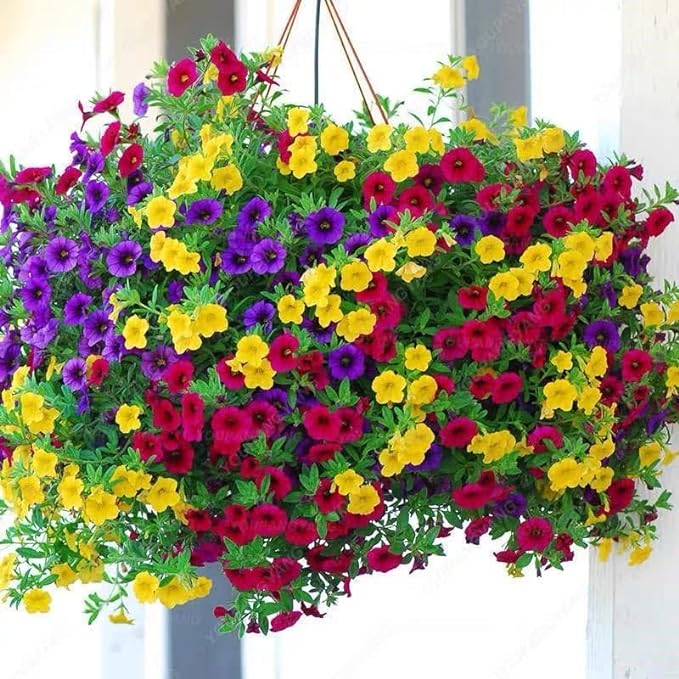
Petunia & Melissa Perennial Flower Seeds for Home Garden
Petunia & Melissa Perennial Flower Seeds for Home Garden
Hanging Petunia Seeds (Perennial)
Characteristics and Uses of Hanging Petunia Plants
Hanging Petunia Seeds produce vibrant, cascading plants that are perfect for adding a splash of color to any garden or outdoor space. Known for their abundant blooms and delightful fragrance, these perennial petunias are ideal for hanging baskets, window boxes, and container gardens. Their trailing growth habit allows them to create stunning displays, making them a favorite among gardeners looking to enhance their patios, balconies, and entryways. With a variety of colors available, these petunias can complement any garden design while attracting pollinators such as bees and butterflies.
Growing Conditions for Hanging Petunia Plants
- Light Requirements: Prefers full sun for optimal growth and flowering.
- Soil Type: Thrives in well-drained, nutrient-rich potting soil.
- Temperature: Best suited for moderate climates, ideally between 60°F to 75°F.
Planting Tips for Hanging Petunia
- Start seeds indoors 8-10 weeks before the last frost date for early blooms.
- Transplant seedlings outdoors after the danger of frost has passed.
- Space plants about 10-12 inches apart in hanging baskets to allow for proper growth.
Watering Instructions and Tips
- Water regularly, keeping the soil consistently moist but not waterlogged.
- Allow the top inch of soil to dry out between waterings to prevent root rot.
- Water in the morning to reduce evaporation and fungal diseases.
Growing Zones
Hanging Petunia is suitable for USDA zones 9-11 and can thrive in various global zones, making it a versatile choice for gardeners in different climates.
Key Benefits & Uses
- Long-lasting blooms provide continuous color throughout the growing season.
- Low maintenance and easy to care for, perfect for gardeners of all levels.
- Can be used in mixed arrangements for added texture and visual appeal.
Best Uses in the Garden & Landscape
- Ideal for hanging baskets, window boxes, and patio containers.
- Great for creating colorful borders and accents in flower beds.
- Can be used in vertical gardens for a stunning cascading effect.
Conclusion
Hanging Petunia Seeds (Perennial) are an exceptional choice for those looking to enhance their outdoor spaces with beautiful, vibrant blooms. As a big, trusted name in the seed world, Dhara Seeds offers a wide range of high-quality, non-GMO varieties to gardeners everywhere. Whether you are a novice or an experienced gardener, these delightful flowers are sure to brighten your garden.
FAQ
How do I grow Hanging Petunia Seeds?
To grow Hanging Petunia Seeds, start by planting them indoors in a well-drained potting mix. Keep the soil moist and provide full sun until the seeds germinate, then transplant them outdoors after the last frost.
When is the best time to plant Hanging Petunia Seeds?
The best time to plant Hanging Petunia Seeds is in the spring after the last frost, allowing the plants to establish before the warmer months.
Are Hanging Petunias difficult to grow?
Hanging Petunias are relatively easy to grow and maintain, making them suitable for gardeners of all levels. With proper care, they can thrive and provide beautiful blooms throughout the growing season.
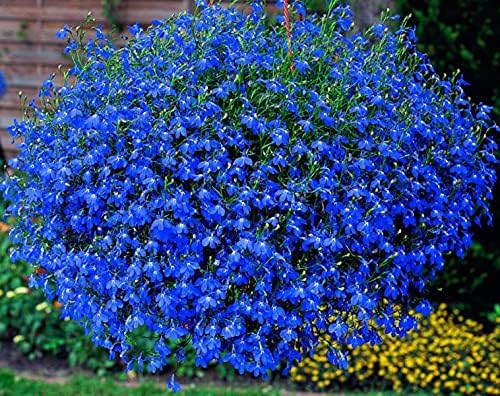
Anagallis 'Skylover' Lobelia Rare Flower Seeds for Balcony & Garden
Anagallis 'Skylover' Lobelia Rare Flower Seeds for Balcony & Garden
Anagallis 'Skylover' Lobelia Seeds
Characteristics and Uses of Anagallis 'Skylover' Plants
Anagallis 'Skylover' Lobelia Seeds produce stunning plants known for their vibrant blue flowers that resemble a clear summer sky. This charming perennial is perfect for adding a splash of color to borders, containers, and hanging baskets. The delicate, star-shaped blooms are not only visually appealing but also attract pollinators, making them a great addition to any garden. Their compact growth habit and long blooming period make them ideal for both novice and experienced gardeners looking to enhance their outdoor spaces with low-maintenance yet beautiful plants.
Growing Conditions for Anagallis 'Skylover' Plants
- Light Requirements: Prefers full sun to partial shade for optimal growth.
- Soil Type: Thrives in well-drained, fertile soil rich in organic matter.
- Temperature: Best suited for moderate climates, tolerating a range of temperatures.
Planting Tips for Anagallis 'Skylover'
- Start seeds indoors 6-8 weeks before the last frost date for early blooms.
- Transplant seedlings outdoors after the danger of frost has passed.
- Space plants about 10-12 inches apart to allow for proper air circulation and growth.
Watering Instructions and Tips
- Water regularly, keeping the soil consistently moist but not soggy.
- Allow the top inch of soil to dry out between waterings to prevent root rot.
- Water in the morning to reduce evaporation and fungal diseases.
Growing Zones
Anagallis 'Skylover' is suitable for USDA zones 3-9 and can thrive in various global zones, making it a versatile choice for gardeners in different climates.
Key Benefits & Uses
- Vibrant blue blooms provide continuous color throughout the growing season.
- Low maintenance and easy to care for, perfect for gardeners of all levels.
- Can be used in mixed arrangements for added texture and visual appeal.
Best Uses in the Garden & Landscape
- Ideal for creating colorful borders and accents in flower beds.
- Great for container gardening on patios, balconies, and decks.
- Can be used in hanging baskets for a cascading effect.
Conclusion
Anagallis 'Skylover' Lobelia Seeds are an exceptional choice for those looking to enhance their gardens with beautiful, vibrant blooms. As a big, trusted name in the seed world, Dhara Seeds offers a wide range of high-quality, non-GMO varieties to gardeners everywhere. Whether you are a novice or an experienced gardener, these delightful flowers are sure to brighten your garden.
FAQ
How do I grow Anagallis 'Skylover' Seeds?
To grow Anagallis 'Skylover' Seeds, start by planting them indoors in a well-drained potting mix. Keep the soil moist and provide full sun to partial shade until the seeds germinate, then transplant them outdoors after the last frost.
When is the best time to plant Anagallis 'Skylover' Seeds?
The best time to plant Anagallis 'Skylover' Seeds is in the spring after the last frost, allowing the plants to establish before the warmer months.
Are Anagallis 'Skylover' difficult to grow?
Anagallis 'Skylover' is relatively easy to grow and maintain, making it suitable for gardeners of all levels. With proper care, they can thrive and provide beautiful blooms throughout the growing season.
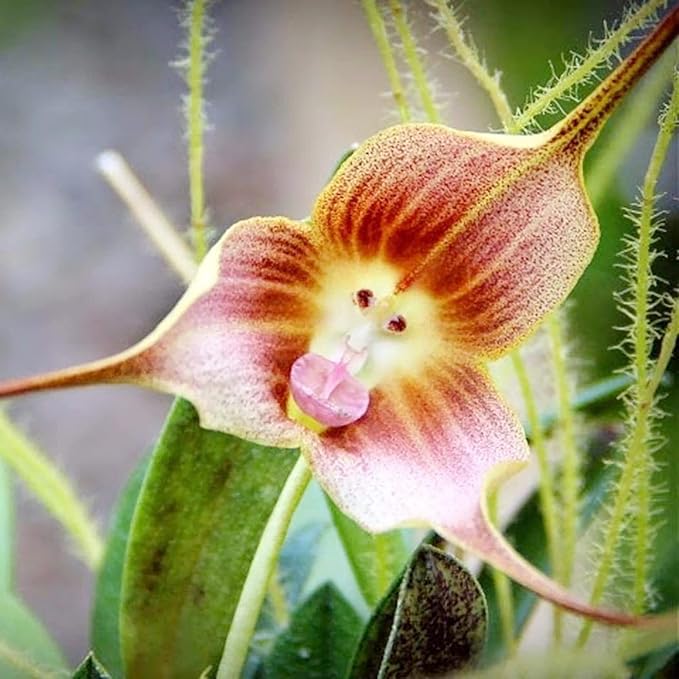
Monkey Face Orchid Perennial Flower Seeds for Home Garden
Monkey Face Orchid Perennial Flower Seeds for Home Garden
5 Types Monkey Face Orchid Seeds
Characteristics and Uses of Monkey Face Orchid Plants
5 Types Monkey Face Orchid Seeds produce unique and captivating plants known for their distinctive flowers that resemble monkey faces. These exotic orchids are not only visually striking but also fragrant, making them a delightful addition to any garden or indoor space. Each type offers a different color and pattern, providing a variety of options for gardeners looking to create a stunning display. Monkey Face Orchids are perfect for collectors and enthusiasts, as well as for those who want to add a touch of whimsy to their floral arrangements.
Growing Conditions for Monkey Face Orchid Plants
- Light Requirements: Prefers bright, indirect light for optimal growth.
- Soil Type: Thrives in well-draining orchid mix or bark-based potting soil.
- Temperature: Best suited for warm climates, ideally between 65°F to 80°F during the day and slightly cooler at night.
Planting Tips for Monkey Face Orchid
- Start seeds in a sterile medium to prevent disease and promote healthy growth.
- Transplant seedlings into individual pots once they have developed a few roots.
- Ensure proper spacing between plants to allow for air circulation and growth.
Watering Instructions and Tips
- Water regularly, allowing the medium to dry slightly between waterings.
- Use room temperature water to avoid shocking the roots.
- Reduce watering frequency during the winter months when the plant is not actively growing.
Growing Zones
Monkey Face Orchids are suitable for USDA zones 10-12 and can thrive in various global zones, making them a versatile choice for gardeners in different climates.
Key Benefits & Uses
- Unique and eye-catching flowers provide a conversation starter in any garden.
- Fragrant blooms enhance the sensory experience of your outdoor space.
- Low maintenance and easy to care for, perfect for gardeners of all levels.
Best Uses in the Garden & Landscape
- Ideal for container gardening on patios, balconies, and indoors.
- Great for creating focal points in flower beds or mixed arrangements.
- Can be used in terrariums or as part of a tropical-themed garden.
Conclusion
5 Types Monkey Face Orchid Seeds are an exceptional choice for those looking to cultivate unique and beautiful orchids. As a big, trusted name in the seed world, Dhara Seeds offers a wide range of high-quality, non-GMO varieties to gardeners everywhere. Whether you are a novice or an experienced gardener, these delightful orchids are sure to enhance your gardening experience.
FAQ
How do I grow Monkey Face Orchid Seeds?
To grow Monkey Face Orchid Seeds, start by planting them in a sterile medium. Keep the medium moist and provide bright, indirect light until the seeds germinate, then transplant them into individual pots.
When is the best time to plant Monkey Face Orchid Seeds?
The best time to plant Monkey Face Orchid Seeds is in the spring when temperatures are warm, allowing the plants to establish before the heat of summer.
Are Monkey Face Orchids difficult to grow?
Monkey Face Orchids are relatively easy to grow with the right conditions, making them suitable for gardeners of all levels. With proper care, they can thrive and produce stunning blooms throughout the growing season.








